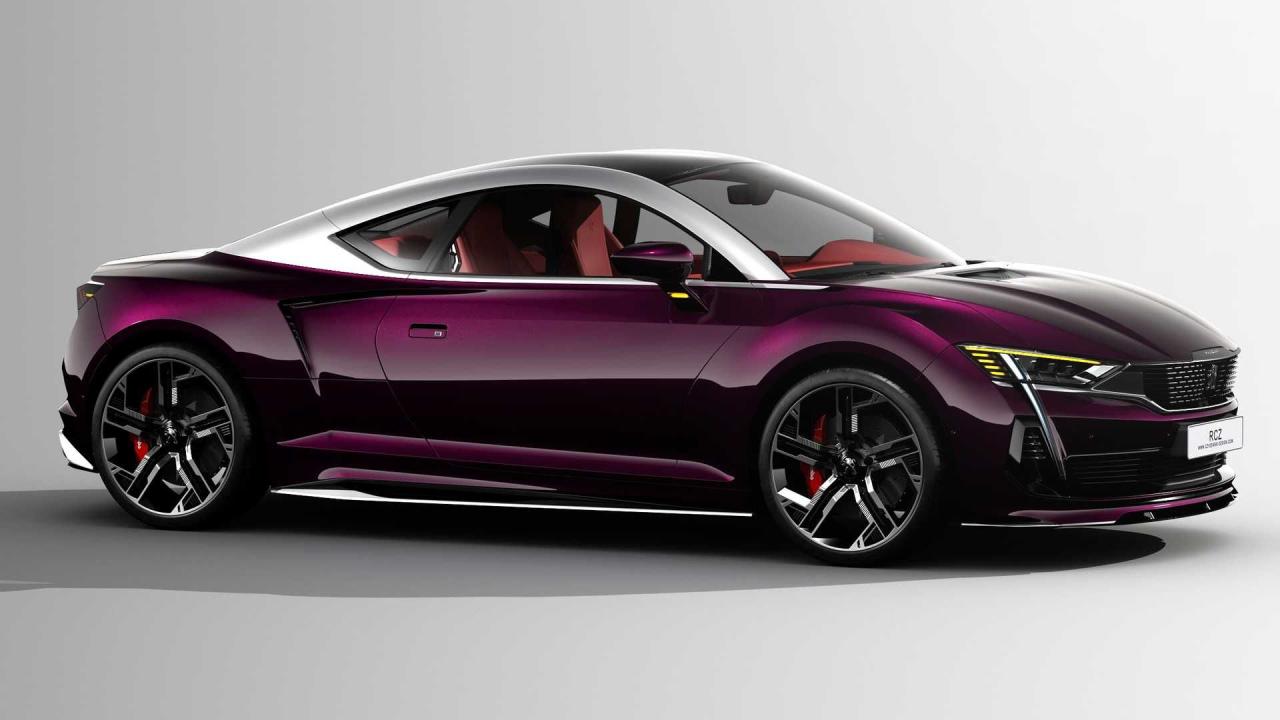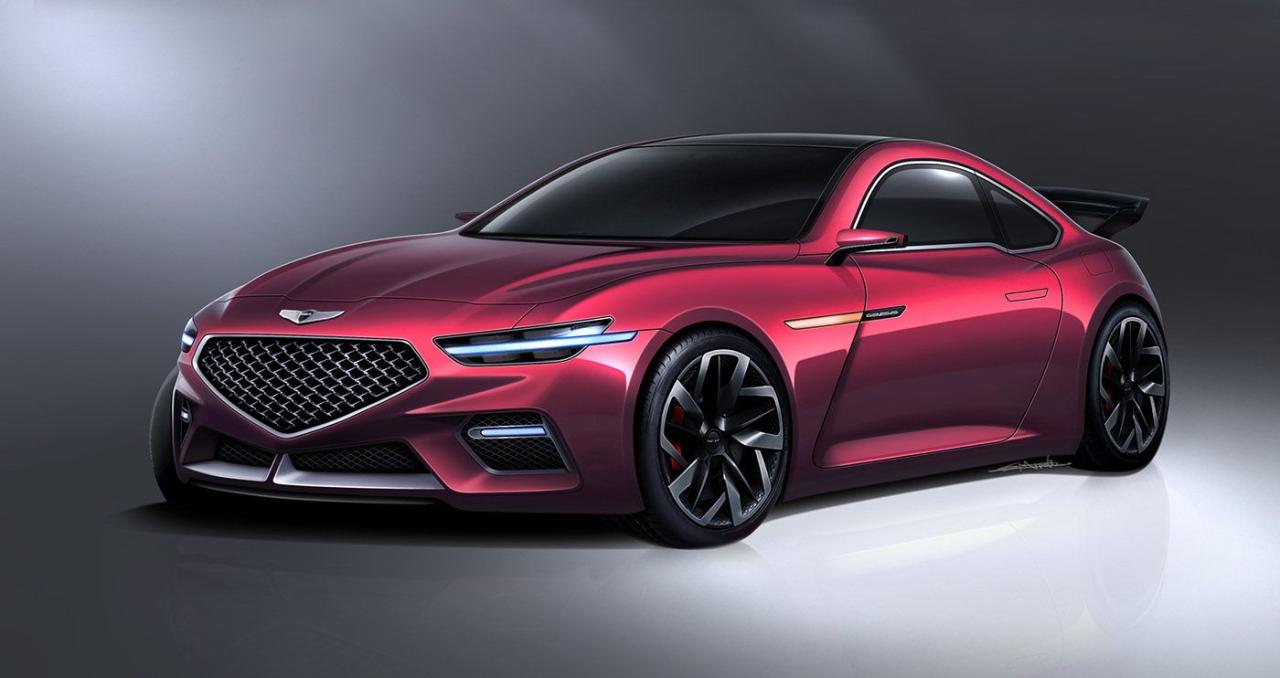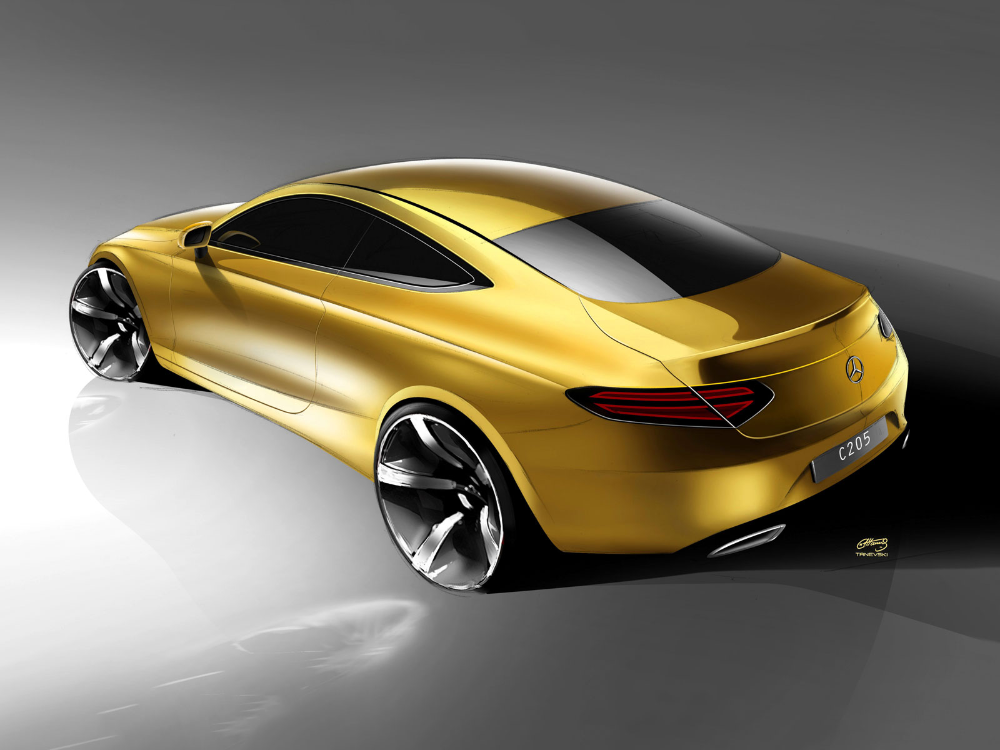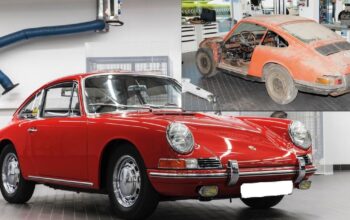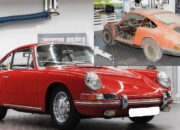The sports coupe, a paragon of automotive artistry and engineering, has always represented more than just a mode of transport. It embodies passion, performance, and a profound statement of personal style. Throughout its storied history, the design of these magnificent machines has undergone continuous evolution, driven by technological advancements, shifts in consumer tastes, and the relentless pursuit of speed and aesthetic perfection. These aren’t merely incremental changes; they are genuine design breakthroughs that have reshaped the automotive landscape, pushing the boundaries of what is visually appealing, aerodynamically efficient, and technologically feasible. This article will delve into the transformative journey of sports coupe design, exploring the pivotal innovations, the principles that guide their creation, and the exciting trajectories shaping their future.
The Enduring Allure of the Sports Coupe
What sets a sports coupe apart from other vehicles? It’s typically defined by its two-door configuration, sleek, low-slung profile, and an emphasis on dynamic performance. Unlike sedans built for practicality or SUVs designed for utility, the sports coupe prioritizes the driving experience, often at the expense of passenger or cargo space. This singular focus allows designers and engineers unparalleled freedom to sculpt forms that are both functional and breathtakingly beautiful. The appeal lies in its aspirational quality, its ability to evoke emotions, and its visual representation of speed even when stationary. It’s a synthesis of art and science, a testament to human ingenuity.
Historically, sports coupes emerged from the racing circuits and grand touring traditions of the early 20th century, where speed and elegance were equally prized. Early examples might have been derived from existing sedan platforms but quickly evolved into distinct entities. From the sleek lines of a pre-war Bugatti to the post-war sensuality of an Alfa Romeo or Jaguar, the coupe has consistently been a canvas for radical thought and daring execution. The breakthroughs we celebrate today are built upon this rich heritage, constantly reinterpreting classic ideals with contemporary technologies and visions.
Foundational Design Elements and Principles
The visual impact of a sports coupe is the culmination of meticulous attention to several core design elements. Breakthroughs often occur when designers find novel ways to interpret or integrate these elements, leveraging new materials, manufacturing processes, or aerodynamic insights.
A. Aerodynamic Prowess and Form Language
At the heart of any performance vehicle, and especially a sports coupe, is aerodynamics. This isn’t just about reducing drag; it’s about shaping the air to the car’s advantage, generating downforce for grip, managing airflow for cooling, and minimizing turbulence for stability.
- Sleek Silhouettes: The classic “teardrop” or “wedge” shape is a fundamental starting point, minimizing frontal area and allowing air to flow smoothly over and around the vehicle. Early breakthroughs involved integrating fenders into the main body rather than having them protrude, creating a more unified and slippery form.
- Integrated Spoilers and Wings: What began as bolt-on additions for racing cars quickly became integrated design elements. Active aerodynamics, where spoilers deploy at speed or even adjust their angle, represent a significant breakthrough, offering variable downforce without compromising the clean lines at lower speeds. Think of the seamless integration of a deployable rear wing on a Porsche 911 or the intricate active aero of a McLaren.
- Underbody Aerodynamics: Often unseen but critically important, the design of the underbody (diffusers, flat floors, vortex generators) significantly impacts downforce and drag. Breakthroughs here involve sophisticated computational fluid dynamics (CFD) simulations, allowing designers to sculpt the underside with incredible precision.
- Air Intakes and Vents: These are not just functional for cooling engines or brakes; they are critical aesthetic elements that communicate aggression and performance. Their integration into the bodywork, often subtly, speaks volumes about a car’s intent.
B. The Power of Proportions
Proportions are arguably the most crucial aspect of a sports coupe’s aesthetic appeal. They dictate the car’s stance, balance, and perceived dynamism.
- Long Hood, Short Deck: This classic sports car proportion, exemplified by the Jaguar E-Type or the Mercedes-Benz SL, creates a sense of forward motion and power, implying a large engine residing under the elongated hood.
- Low Slung Stance: A low roofline and overall low height contribute to a sense of speed and agility, enhancing the perception of a low center of gravity.
- Cab-Backward Design: The cabin pushed towards the rear wheels further emphasizes the long hood and powerful rear-wheel-drive dynamics.
- Wheel-to-Body Ratio: Large wheels that fill the wheel wells convey a powerful and planted look, signifying performance capability. Breakthroughs in wheel design, from multi-spoke patterns to forged alloys, have also contributed to this visual impact.
C. The Art of Lighting: Illumination and Identity
Automotive lighting has evolved from simple functional elements to sophisticated design signatures.
- Halogen to Xenon to LED: The progression of lighting technology has allowed for smaller, more efficient, and more sculptable light units. LEDs, in particular, have been a breakthrough, enabling intricate light signatures (daytime running lights, sequential turn signals) that define a brand’s identity both day and night.
- Laser and OLED Technology: More recent breakthroughs include laser headlights, offering unparalleled illumination distance, and OLED taillights, which allow for incredibly thin, complex, and even animated light patterns, adding a futuristic dimension to the rear fascia.
- Integrated Lighting: The trend is towards lights that are seamlessly integrated into the bodywork, sometimes almost disappearing until illuminated, rather than being distinct, bolted-on units.
D. Interior Design: The Driver’s Command Center
While the exterior captivates, the interior of a sports coupe is where the driver forms an intimate connection with the machine. Design breakthroughs here focus on ergonomics, materials, and technological integration.
- Driver-Centric Cockpit: The layout is typically asymmetrical, with controls angled towards the driver, emphasizing their role as the primary occupant. This involves ergonomic considerations for reach, visibility, and tactile feedback.
- Materials and Craftsmanship: High-quality materials like Alcantara, carbon fiber, brushed aluminum, and premium leather are used not just for luxury but often for weight reduction and enhanced grip. Breakthroughs in material science allow for lighter, stronger, and more sustainable options.
- Digital Integration: Analog gauges have largely given way to fully customizable digital instrument clusters, offering a wealth of information in a dynamic format. Large touchscreens for infotainment, navigation, and vehicle settings are now standard, requiring designers to seamlessly integrate these interfaces without overwhelming the driver.
- Seating Design: Sports coupe seats are often performance-oriented, providing aggressive bolstering to hold occupants in place during spirited driving. Lightweight construction and advanced adjustability (e.g., memory functions, heating/cooling) are common.
Technological Catalysts for Design Evolution
Modern sports coupe design is inextricably linked to advancements in various technological domains. These aren’t just tools; they are enablers of previously impossible designs.
A. Computer-Aided Design (CAD) and Simulation
The advent of powerful CAD software and advanced simulation tools has revolutionized the design process.
- Precision and Iteration: Designers can create highly detailed 3D models with extreme precision, allowing for rapid iteration of design concepts. What once took weeks or months with clay models can now be explored virtually in hours.
- Computational Fluid Dynamics (CFD): CFD simulations allow engineers to virtually test aerodynamic performance, visualize airflow, and identify areas for optimization without building physical prototypes. This has led to highly refined and efficient aerodynamic forms.
- Virtual Reality (VR) and Augmented Reality (AR): Designers can now immerse themselves in a virtual model of the car’s interior and exterior, experiencing the design from various perspectives before a single physical component is made. This accelerates the design review process and allows for early identification of ergonomic or aesthetic issues.
B. Advanced Manufacturing Techniques
New manufacturing methods have opened up a world of possibilities for complex geometries and lightweight structures.
- 3D Printing: Rapid prototyping with 3D printing allows designers to quickly produce physical models of components or entire scale models, providing tactile feedback and accelerating the design validation process.
- Automated Production: Robotics in manufacturing enables precise, repeatable processes that are crucial for high-quality production of intricate components.
- Advanced Forming Techniques: Hydroforming, superforming, and advanced stamping techniques allow for the creation of complex sheet metal shapes that were previously impossible or prohibitively expensive, enabling more sculptural and flowing body panels.
C. Electrification and Powertrain Packaging
The shift to electric powertrains is perhaps the most significant disruptive force in automotive design in over a century.
- New Proportions: Electric vehicles (EVs) don’t require large internal combustion engines or traditional transmissions and exhaust systems. This frees up significant space. Batteries are typically located in a flat “skateboard” platform under the floor, leading to shorter hoods, longer wheelbases, and more cabin space (a “cab-forward” design). While this challenges traditional sports coupe proportions, it also opens avenues for entirely new aesthetic interpretations of performance.
- Weight Distribution: The heavy battery pack provides a very low center of gravity, beneficial for handling. Designers can leverage this inherent stability.
- Reduced Cooling Needs: Electric motors generate less heat than ICEs, allowing for smaller, less prominent grilles and air intakes, leading to cleaner front fascias.
- Silent Power: The absence of engine noise puts greater emphasis on visual and tactile cues to convey performance.
D. Autonomous Driving and Sensor Integration
As vehicles move towards greater autonomy, the integration of sensors (LIDAR, radar, cameras) becomes a key design challenge.
- Seamless Integration: Designers must find ways to integrate these sensors without disrupting the car’s aesthetic flow. This could involve placing them behind transparent panels, integrating them into lighting units, or even making them retractible.
- Interior Rethink: In a fully autonomous sports coupe, the interior could become a lounge-like space, with reconfigurable seating and entertainment systems. This shifts design focus from a driver-centric cockpit to a more versatile living space, though the driver-focused aspect will likely remain for the foreseeable future in true sports coupes.
Epochal Breakthroughs: A Historical Perspective
Examining specific periods and models reveals how sports coupe design has continually evolved through significant breakthroughs.
A. The Post-War Era: Elegance and Speed (1950s-1960s)
This era saw a fusion of European elegance and American power, defining the quintessential sports coupe.
- Jaguar E-Type (1961): A true masterpiece, its long hood, curvaceous lines, and sensual proportions were revolutionary. Its breakthrough lay in its aerodynamic purity combined with undeniable beauty, making it an instant icon.
- Aston Martin DB5 (1963): Famous as James Bond’s car, its elegant, muscular form defined British sophistication and power. The seamless integration of lighting and subtle aerodynamic curves showcased refined craftsmanship.
- Ferrari 250 GTO (1962): A race car for the road, its form was dictated by aerodynamic necessity, yet it achieved breathtaking beauty. It was a breakthrough in directly translating racing function into aesthetic excellence.
B. The Muscle Car and Performance Revolution (1960s-1970s)
While often associated with brute force, American muscle cars also showcased significant design trends that trickled down to more refined sports coupes.
- Ford Mustang (1964): Created the “pony car” segment. Its long hood, short deck, and aggressive stance democratized the sports coupe aesthetic. Its modular design allowed for various iterations and personalization.
- Chevrolet Corvette C2 “Sting Ray” (1963): Its split-window design (briefly) and sharp, defined lines, inspired by aerospace, were a radical departure from its predecessors, showcasing a more angular and aggressive approach to performance design.
C. The Aerodynamic Renaissance (1970s-1990s)
The oil crisis and increasing emphasis on efficiency pushed designers towards more slippery forms.
- Porsche 911 (G-Series, 964, 993): While maintaining its iconic silhouette, successive generations of the 911 constantly refined its aerodynamics, integrating larger spoilers, smoother surfaces, and improved airflow management, culminating in the incredibly fluid 993. The breakthroughs were in maintaining brand identity while continually optimizing performance through subtle yet effective design changes.
- Ferrari F40 (1987): An uncompromising, function-over-form masterpiece. Its exposed carbon fiber, massive rear wing, and aggressive vents were all dictated by aerodynamic and cooling needs, setting a new benchmark for extreme performance design. It was a breakthrough in making performance brutally beautiful.
D. The Digital Age and Hypercar Era (2000s-Present)
Modern design embraces computational power, advanced materials, and hybrid/electric powertrains.
- Audi R8 (2006): Its “sideblade” became an instant design signature, visually separating the cabin from the engine bay. It combined sleek lines with aggressive intakes, showcasing a modern, technologically advanced aesthetic.
- McLaren 720S (2017): A true aerodynamic marvel. Its “double-skin” doors channel air directly to the engine, and the absence of conventional headlights (replaced by eye-like apertures) are groundbreaking. Its design is almost entirely driven by airflow management, yet it remains incredibly beautiful.
- Electric Sports Coupes (e.g., Porsche Taycan, Tesla Roadster): These vehicles redefine proportions and grilles. The Taycan, for instance, maintains a low, wide stance with signature “four-point” LED headlights, adapting Porsche’s DNA to an electric future. The lack of a large front grille is a significant design shift.
Impact of Design Breakthroughs
The ripple effects of these design innovations extend far beyond aesthetics, influencing various aspects of the automotive industry and driving experience.
A. Performance Enhancement
The most direct impact of design breakthroughs, especially in aerodynamics, is on performance. Reduced drag allows for higher top speeds and better fuel efficiency, while increased downforce improves grip, stability, and handling at high speeds. This direct link between form and function is fundamental to the sports coupe’s identity.
B. Safety Improvements
Modern design integrates active and passive safety features seamlessly. Stronger, lighter materials and advanced structural designs protect occupants in crashes. Improved visibility, integrated sensor arrays for driver assistance systems (ADAS), and advanced lighting systems also contribute significantly to safety.
C. Brand Differentiation and Identity
Unique design elements become crucial for brand recognition and differentiation in a crowded market. A distinctive grille, a signature lighting pattern, or a specific body line can instantly identify a manufacturer. Design breakthroughs contribute to this by providing novel elements that can be incorporated into a brand’s evolving design language.
D. Consumer Appeal and Aspiration
Ultimately, design breakthroughs capture the imagination of consumers. A beautifully designed sports coupe is often an object of desire, an aspirational product that evokes emotion and status. This emotional connection is vital for sales and brand loyalty, far beyond mere utility.
E. Cultural Icon Status
Many sports coupes transcend their role as mere vehicles to become cultural icons. Their design becomes synonymous with an era, a lifestyle, or a particular performance benchmark. This lasting impact is a testament to the power of breakthrough design to resonate with generations.
The Road Ahead: Future Trends in Sports Coupe Design
The sports coupe is not static; its design is poised for radical transformation in the coming decades, driven by electrification, autonomy, and evolving consumer expectations.
A. Maximizing Electric Proportions
As electric powertrains become standard, designers will continue to explore and maximize the new freedoms they offer.
- Cab-Forward Evolution: Expect even shorter hoods and more pronounced cab-forward designs, allowing for larger, more luxurious, or versatile interiors without compromising the external length.
- New Front Fascias: Grilles may disappear entirely or be reinterpreted as light-emitting or sensor-laden surfaces. The “face” of the electric sports coupe will be fundamentally different.
- Aerodynamic Skins: With less need for cooling apertures, surfaces can be even smoother, potentially incorporating active aero elements that are nearly invisible until deployed.
B. Seamless Sensor Integration for Autonomy
The challenge of integrating the plethora of sensors required for autonomous driving will continue to drive innovation.
- Integrated Solutions: Instead of unsightly bumps or pods, sensors will be seamlessly integrated into body panels, lighting units, or even embedded within the car’s “skin” using advanced materials.
- “Eyes” of the Car: The car’s “perception” systems might be represented visually, perhaps through subtle lighting changes or dynamic surfaces that indicate awareness of surroundings.
C. Sustainable Materials and Circular Design
Environmental consciousness will increasingly influence material choices and manufacturing processes.
- Recycled and Bio-based Materials: Use of recycled plastics, bio-composites, and sustainably sourced natural fibers will become prevalent in both interior and exterior components.
- Lightweighting Continues: The pursuit of lighter materials (e.g., advanced carbon fibers, lightweight alloys, even novel foam structures) will be crucial, especially for EVs where battery weight is a factor.
- Modular and Repairable Design: A shift towards designs that facilitate easier repair, recycling, and component replacement will gain traction, promoting a more circular economy.
D. Personalization and Digital Customization
Mass production will be increasingly complemented by highly personalized options.
- Bespoke Manufacturing: Advanced manufacturing techniques like 3D printing will enable greater customization of interior components and even exterior trim pieces.
- Digital Skins: Imagine cars with dynamic exterior surfaces, perhaps using E Ink technology or flexible LED panels, allowing owners to change the car’s color, pattern, or even display messages.
- Interior Configurable Spaces: Seats might reconfigure, digital displays might pop up or retract, and ambient lighting could adapt to mood or destination.
E. Advanced Active Aerodynamics
While present today, active aero will become even more sophisticated and integrated.
- Morphing Surfaces: Instead of just spoilers, entire sections of the bodywork might subtly deform to optimize airflow for different driving conditions or speeds.
- Adaptive Flow Control: Micro-actuators and intelligent surfaces might actively manage airflow over the car’s body, providing unprecedented control over downforce and drag.
Challenges and Considerations for Designers
Despite the excitement, sports coupe designers face unique challenges in bringing these breakthroughs to fruition.
A. Balancing Aesthetics with Regulation
Stringent safety regulations (e.g., pedestrian safety, crash standards) and emissions regulations (even for EVs, concerning manufacturing processes) can constrain design freedom. Designers must ingeniously meet these requirements without compromising the car’s visual appeal or performance.
B. Maintaining Brand Heritage
For established marques, there’s a delicate balance between pushing design boundaries and retaining the core DNA that defines the brand. A Ferrari must always look like a Ferrari, even if it’s electric. This requires a deep understanding of historical design elements and their modern interpretation.
C. Cost of Advanced Materials and Manufacturing
While new materials and techniques offer incredible possibilities, they often come with a high price tag, especially for bespoke or low-volume production. Designers must work closely with engineers and production teams to ensure that innovative designs are economically viable.
D. Shifting Consumer Demands
The rise of the SUV has significantly impacted the traditional car market, including sports coupes. Designers must continue to innovate and define the unique value proposition of a sports coupe to maintain its relevance and appeal in an SUV-dominated world. Perhaps the “sports coupe” will evolve into a low-slung, performance-oriented electric crossover, blurring traditional lines.
Conclusion
The journey of sports coupe design is a captivating narrative of relentless innovation, where form perpetually chases function and aesthetics push the boundaries of engineering. From the sculpted sensuality of early classics to the hyper-aerodynamic, digitally integrated machines of today, each era has brought forth its unique set of breakthroughs. These are not merely cosmetic changes; they represent profound shifts in how vehicles are conceived, engineered, and experienced.
As we look to the future, the convergence of electrification, autonomous technology, and sustainable practices promises an even more radical transformation. The sports coupe will continue to evolve, shedding old constraints and embracing new freedoms, but its core essence – an uncompromising blend of beauty, performance, and the sheer thrill of driving – will undoubtedly endure. The ongoing pursuit of the perfect line, the ideal proportion, and the most efficient airflow ensures that the sports coupe remains an enduring canvas for automotive artistry, perpetually redefining what constitutes a true design breakthrough.

